UPSC Exam > UPSC Notes > History for UPSC CSE > Nitin Singhania Summary: Languages in India
Nitin Singhania Summary: Languages in India | History for UPSC CSE PDF Download
| Table of contents |

|
| Introduction |

|
| Classification of Indian Languages |

|
| Official Languages of India |

|
| Status of Classical Language |

|
| National Translation Mission |

|
| Ancient Scripts of India |

|
Introduction
- Writings throughout history reflect the culture, lifestyle, and politics of their time.
- Each culture developed its own language, contributing to a vast literary collection.
- This extensive literature offers insight into the evolution of languages and cultures over centuries.
- A language is a system of communication through speech, sharing meaning among a group.
- Language families consist of languages with a common ancestor predating recorded history.
- Dialects are local forms of language; multiple dialects can stem from one language.
- Many languages in India belong to different language families, with most falling under the Indo-Aryan group, originating from the larger Indo-European family.
- Some language groups in India are native to the subcontinent itself.
Classification of Indian Languages
Languages in India- classified into following:

Indo Aryan Group of Languages
- Branch of larger Indo-European family which with the advent of Aryans.
- Largest language group of India - spoken by 74% Indians.
- Sub-divided into three groups based on time period of their origin.
(A) Old Indo-Aryan Group
- Development around 1500 B.C. & Sanskrit was born out of it.
- Upanishads, Puranas & Dharmasutras- in Sanskrit.
- Sanskrit is the mother of many Indian languages.
- Development of Sanskrit- helped in understanding diversity & richness of our culture.
- Sanskrit- most ancient language of our country & one of 22 scheduled languages.
Development of Sanskrit
- Sanskrit grammar originated with Panini's Asthadhyayi around 400 B.C., marking the earliest Sanskrit grammar book.
- Buddhist literature from both Mahayana and Hinayana schools was composed in Sanskrit.
- Mahavastu from the Hinayana school and Lalitavistara, the most sacred Mahayana text, along with Ashvagosha's Buddhacharita, are notable Sanskrit works.
- Sanskrit's influence spread across all regions of India, impacting the north, south, east, and west.
- A refined version of Vedic Sanskrit, known as chaste Sanskrit, developed between 300 B.C. to 200 B.C.
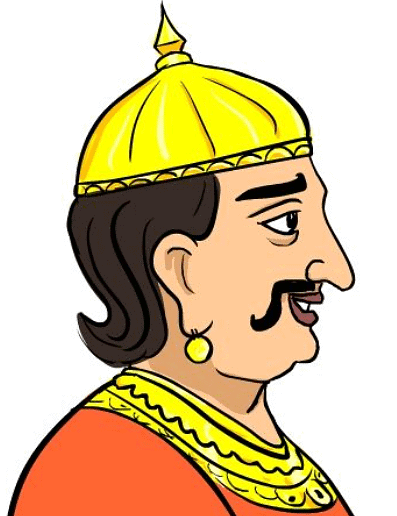 King Rudramana
King Rudramana - The first evidence of Sanskrit usage is found in the inscriptions of Rudradamana at Junagarh, located in present-day southern Gujarat.
- During the Gupta period, Sanskrit was extensively used in poetry.
- The Gupta era witnessed the creation of pure literature such as Mahakavyas (epics) and Khandakavyas (semi-epics).
- This period, known for its unique creative output, saw the development of diverse literary works characterized by ornate styles.
- In the Gupta period, societal features emerged, including the use of Sanskrit by high varna characters and Prakrit by women and shudras.Question for Nitin Singhania Summary: Languages in IndiaTry yourself:Which language is considered the most ancient language of India?View Solution
(B) Middle Indo-Aryan Group
- Prakrit, starting from around 600 BC to 1000 AD, was a natural and casual language without strict rules, serving as the common tongue.
- It encompassed various Middle Indo-Aryan languages like Ardha-Magadhi, Pali (used by Theravada Buddhists), and Apabhramsha.
- Prakrit was primarily spoken by common people, while Sanskrit, with its fixed rules, was used by elites like Brahmins.
- Writing texts in Prakrit was a relatively late development compared to Sanskrit.
- The Jain 'Agamas' utilized Prakrit, particularly the Ardha-Magadhi language.
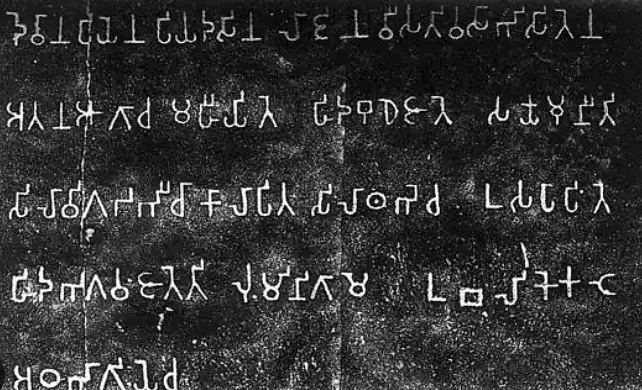 Prakrit Language
Prakrit Language - Prakrit included languages like:
(i) Pali, widely spoken in Magadha and closely related to Sanskrit, serving as the lingua franca of Theravada Buddhism.
(ii) Magadhi Prakrit or Ardha-Magadhi, which became significant after the decline of Sanskrit and Pali, spoken by Buddha and Mahavira and evolving into Eastern Indian languages.
(iii) Shauraseni, used for writing dramas and serving as a precursor to Northern Indian languages, notably used by Jain monks.
(iv) Maharashtri Prakrit, spoken until the 9th century AD and serving as the predecessor to Marathi and Konkani, widely used in Western and Southern India.
(v) Elu, an ancient form of Sinhala language in Sri Lanka, similar to Pali.
(vi) Paishachi, also known as 'Bhuta-Bhasa' or 'dead language,' used in ancient epics like Gunadhya’s Brihatkatha.
Apabhramsa
- Apabhramsa, emerging in the 6th-7th century, is a non-grammatical language.
- It serves as an umbrella term for dialects apart from Sanskrit or Prakrit.
- Apabhramsa marks the transition from Middle to Modern Indo-Aryan languages.
- Despite its non-grammatical nature, it became a literary language used for various texts and legends.
- By the 7th century, Apabhramsa gained recognition as its own distinct identity. Bhamaha, a renowned poet from Kashmir, categorized poetry into Sanskrit, Prakrit, and Apabhramsa.
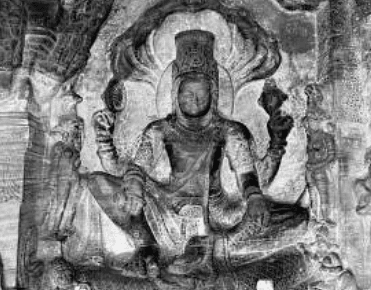 Bhamaha
Bhamaha - Dandin noted that Apabhramsa was the dialect of common folk.
- Many Jain monks and scholars extensively wrote in Apabhramsa.
- Significant texts and writers include Pushpadanta's Mahapurana (a Digambara Jain text) and Dhanapala's Bhavisayattakaha.
(C) Modern Indo-Aryan Group
- The group includes languages such as Hindi, Assamese, Bengali, Gujarati, Marathi, Punjabi, Rajasthani, Sindhi, Odia, Urdu, and more.
- These languages emerged after 1000 AD.
- They are predominantly spoken in the northern, western, and eastern regions of India.
Dravidian Group
- Dravidian languages are spoken in southern India and are used by approximately 25% of Indians.
- Proto-Dravidian evolved into 21 distinct Dravidian languages.
- Dravidian languages are broadly categorized into three groups.
Northern Group
- Consists of Brahui, Malto, and Kurukh languages.
- Brahui is spoken in Baluchistan, Malto in tribal areas of Bengal and Odisha, and Kurukh in Bengal, Odisha, Bihar, and Madhya Pradesh.
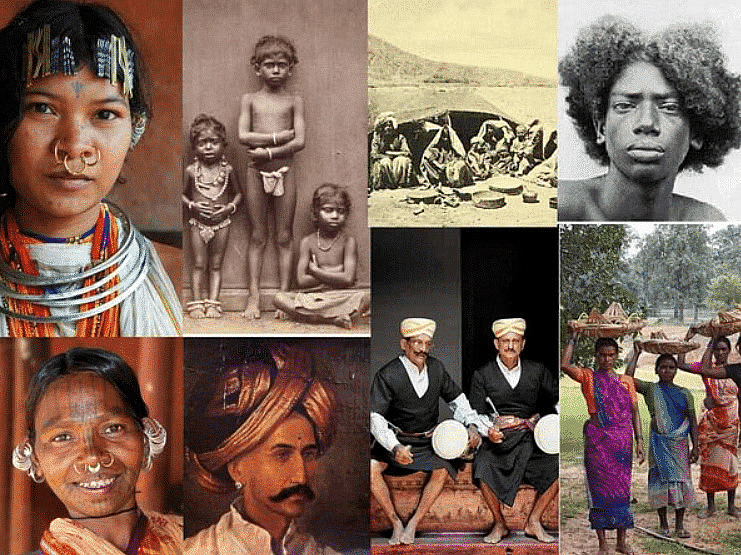 Dravidian Groups
Dravidian Groups
Central Group
- Includes Gondi, Khond, Kui, Manda, Parji, Gadaba, Kolami, Pengo, Naiki, Kuvi, and Telugu languages.
- Only Telugu became a civilized language and is spoken in Andhra Pradesh and Telangana; others remain tribal languages.
Southern Group
- Comprises Kannada, Tamil, Malayalam, Tulu, Kodagu, Toda, and Kota languages.
- Tamil is the oldest among these languages.
Among the 21 Dravidian languages, four major ones are:
- Telugu, which is the most numerically significant.
- Tamil, considered the oldest and purest.
- Kannada.
- Malayalam, the smallest and youngest among the Dravidian languages.
Sino- Tibetan Group
- Belonging to the Mongoloid family, these languages are found throughout the Himalayas, North Bihar, North Bengal, Assam, and the North-Eastern frontiers.
- They are older than Indo-Aryan languages and are referred to as Kiratas in the oldest Sanskrit literature.
- Approximately 0.6% of Indians speak these languages.
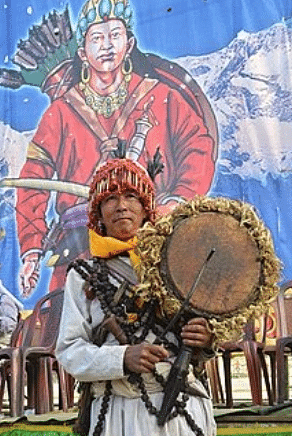 Sino-Tibetan
Sino-Tibetan - This group is further divided into:
(A) Tibeto-Burman: It includes languages categorized into four groups:
(i) Tibetan: Sikkimese, Bhutia, Balti, Sherpa, Lahuli, and Ladakhi.
(ii) Himalayan: Kinnauri and Limbu.
(iii) North Assam: Abor, Miri, Aka, Dafla, and Mishmi.
(iv) Assam-Burmese: Kuki-chin, Mikir, Bodo, and Naga, with Manipuri or Meithi being the most significant language spoken under Kuki-chin.
(B) Siamese-Chinese:The Ahom language, now extinct in India, belongs to this group.
Austric
- Belongs to the Austro-Asiatic sub-family and is represented by languages of the Munda or Kol group.
- Spoken in Central, Eastern, and North-Eastern India, some also belong to the Mon-Khmer group, such as Khasi and Nicobarese.
- Mentioned in ancient Sanskrit literature as Nisadas, these languages predate the arrival of Aryans.
- Santhali, spoken by Santhal tribals of Jharkhand, Bihar, and Bengal, is the most significant language in this group.
- All Austro-Asiatic languages on Indian territory are endangered except for Khasi and Santhali.
Others
- Includes Dravidian adivasi languages like Gondi, Oraon, Praji, etc. which are very distinct and cannot be classified in the groups mentioned above.
Question for Nitin Singhania Summary: Languages in IndiaTry yourself: Which language group in India is the largest and spoken by 74% of Indians?View Solution
Official Languages of India
- Article 343(1) of the Constitution states that Hindi in the Devanagari script is the official language of the Union Government.
- Initially, the use of English for official purposes was to cease 15 years after the Constitution came into effect, but Parliament could decide otherwise.
- The protests against changing the official language from English to Hindi led to the enactment of the Official Language Act, 1963.
- This Act declared Hindi in Devanagari script as the official language of the Union, with English designated as a subsidiary official language.
- States have the freedom to choose their own official language as per the Constitution.
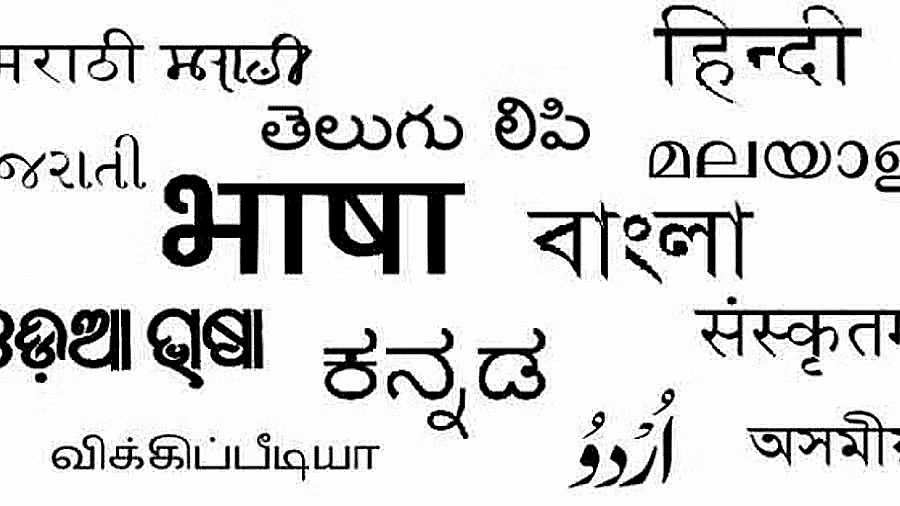
- The Eighth Schedule of the Constitution lists languages that can be used by states for official purposes.
- Initially, 14 languages were listed in the Eighth Schedule, with Sindhi added as the 15th language in 1967.
- The 71st Amendment Act, 1992, added Konkani, Manipuri, and Nepali, while the 92nd Amendment Act, 2003, added Bodo, Maithili, Dogri, and Santhali.
- Currently, 22 languages are listed under the Eighth Schedule.
- There is no national language defined in India, and Hindi is not designated as a national language.
- The Constitution or any Act does not define a national language.
- States are free to adopt their official languages, which need not necessarily be listed in the Eighth Schedule.
- Examples include Tripura adopting Kokborok, Puducherry adopting French, and Mizoram using Mizo.
- English is the official language of Nagaland and Meghalaya, although it is not listed among the 22 scheduled languages in the Eighth Schedule.
Status of Classical Language
Criteria
The criteria to be classified as a "Classical Language," as determined by the Government of India in 2004, include:- High antiquity, spanning 1500-2000 years.
- Possession of a substantial body of ancient literature and texts.
- The original literary tradition should not be borrowed from another speech community.
Languages classified as classical:
- The following languages have been classified as classical:
(i) Tamil in 2004
(ii) Telugu in 2008
(iii) Malayalam in 2013
(iv) Sanskrit in 2005
(v) Kannada in 2008
(vi) Odia in 2014
Benefits
Several benefits accrue to a "Classical Language," including:
- The opportunity for scholars of eminence in Classical Indian Languages to receive two major international awards annually.
- Establishment of a "Centre of Excellence for Studies in Classical Languages."
- Requesting the University Grants Commission to establish a certain number of Professional Chairs for Classical Languages in Central Universities, initially.
National Translation Mission
- Government of India scheme to facilitate higher education by making knowledge texts accessible to students and academies in Indian languages.
- Aim- to disseminate knowledge in all Indian languages listed in Eighth Schedule of the Constitution through translation.
- Efforts are made to orient translators, encourage publishers to publish translations, maintain databases of published translations from, into & between Indian languages.

- It is expected to facilitate modernisation of languages by developing new terminologies & discourse styles through translation.
- Knowledge text translation- first step towards establishing translation as an industry.
- Textual materials for dissemination of knowledge constitute the corpus of Knowledge Texts for NTM.
- At present, NTM is engaged in the translation of all pedagogic materials related to higher education in 22 Indian languages.
- NTM aims to open up the vast body of knowledge by translating the higher education texts, available mostly in English, into Indian languages. It is expected that this process will eventually pave the way for the constitution of an inclusive knowledge society.
Objectives of the Mission
- Certification and training of translators in different areas.
- Generation &maintenance of databases.
- Conducting short-term orientation courses under Translator Education Programme.
- Promotion of machine aided translation between English & Indian languages.
- Development of translation tools such as dictionaries & thesauri.
- Offer fellowships & grants for Natural Language Processing & translation related research projects.
- Promote visibility’ to translators & translation activities by organising events like book launches for translations, regional translation festivals, discussions, book exhibitions, etc.
Linguistic Diversity Index
- Is the probability that two people selected from population at random will have different mother tongues.
- Itranges from 0 (everyone has same mother tongue) to 1 (no two people have same mother tongue).
- Index of Linguistic Diversity (ILD)- measures how LDI has changed over time.
- Global ILD of 0.8 indicates a 20% loss of diversity since 1970, but ratios above 1 are possible, and have appeared in regional indexes.
- Computation of diversity index- based on population of each language as a proportion of total population.
- Distinction between a language & a dialect is fluid and often political.
- Many languages are considered to be dialects of another language.
- Index:
(i) Can’t fully account for vitality of languages
(ii) Doesn’t consider how different languages are from each other
(iii) Doesn’t account for second language usage
(iv) Only considers the total number of distinct languages & their relative frequency as mother tongues.
Lingua Franca
- Is a language or dialect systematically used to make communication possible between persons not sharing a native language or dialect, in particular when it is a third language, distinct from both native languages.
- Also known as bridge language, common language, trade language or vehicular language.
- Are developed for commercial reasons; cultural, religious, diplomatic and administrative convenience, and as a means of exchanging information between scientists and other scholars of different nationalities.
Question for Nitin Singhania Summary: Languages in IndiaTry yourself: Which language is classified as a Classical Language?View Solution
Ancient Scripts of India
- A script is a method used to represent spoken language through specific marks on various mediums such as paper, rocks, or birch-bark.
- It is also referred to as a writing system or orthography.
- In India, two ancient scripts are notable:
(i) Brahmi script
(ii) Kharosthi script.
- Brahmi script is often considered the mother of scripts in India as many ancient and modern scripts, including Devanagari, Tamil, Telugu, Kannada, Odia, and Assamese/Bengali, have evolved from it.
- Urdu is written using a script derived from Arabic.
- Santhali uses its own independent scripts.
Indus Script
- A corpus of symbols produced by the Indus Valley Civilization.
- Most inscriptions are extremely short.
- It's uncertain if these symbols constitute a script used to record a language.
Brahmi Script
- One of the oldest writing systems.
- Used in the Indian subcontinent and Central Asia during the final centuries BCE and early centuries CE.
- Believed to be derived from a contemporary Semitic script or possibly from the Indus script.
- All surviving Indie scripts in Southeast Asia are descendants of Brahmi.
- Well-known Brahmi inscriptions include the rock-cut edicts of Ashoka in north-central India, dated to 250-232 BCE, deciphered by James Prinsep.
- Written from left to right.
- An abugida, where each letter represents a consonant, and vowels are written with diacritics called matras in Sanskrit.
Gupta Script
- Belongs to the Gupta Empire and was used to write Sanskrit.
- Descended from Brahmi and gave rise to scripts like Nagari, Sharada, and Siddham.
- Gave rise to many important scripts of India such as Devanagari, Gurmukhi for Punjabi, Assamese, Bengali, and Tibetan.
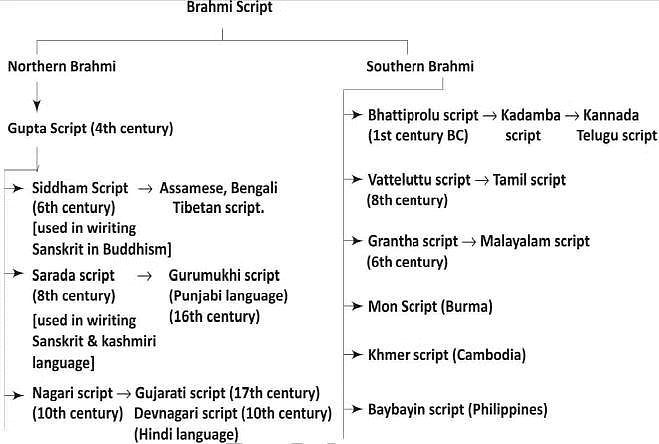
Kharosthi Script
- Used from the 3rd century BC to the 3rd century AD.
- An ancient script used in ancient Gandhara (present-day Afghanistan and Pakistan) to write Gandhari Prakrit and Sanskrit.
- A sister script of Brahmi.
- Deciphered by James Prinsep.
- Also an abugida like Brahmi.
- Includes a set of numerals similar to Roman numerals.
- Mostly written from right to left, although some inscriptions show left-to-right direction.
Vatteluttu Script
- An abugida writing system originating in South India.
- Developed from Tamil-Brahmi and is one of the three main alphabet systems developed by Tamil people to write Granthi or Pallava alphabet and Tamil script.
Kadamba Script
- Marks the birth of a dedicated script for writing Kannada.
- Descendant of Brahmi.
- Developed during the reign of the Kadamba dynasty (4th-6th centuries).
- Later evolved into the Kannada-Telegu script.
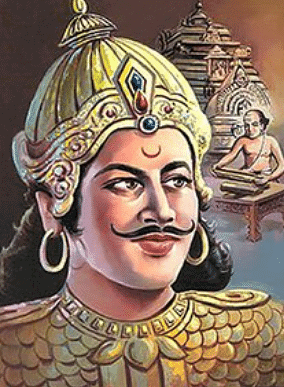 Mayura of Kadamba Dynasty
Mayura of Kadamba Dynasty
Grantha Script
- Widely used from the 6th century to the 20th century.
- Used by Tamil speakers in South India, particularly in Tamil Nadu and Kerala, to write Sanskrit and classical language Manipravalam.
- In restricted use in traditional Vedic schools.
- Evolved from Brahmi script in Tamil Nadu.
- Malayalam script is a direct descendant of Grantha, as are Tigalari and Sinhala alphabets.
Sarada Script
- An abugida writing system of the Brahmic family.
- Developed around the 8th century.
- Used for writing Sanskrit and Kashmiri.
- Its use became restricted to Kashmir and is now rarely used except by Kashmiri Pandits for ceremonial purposes.
Gurmukhi Script
- Developed from Sarada script.
- Standardized during 16th century by Guru Angad.
- The Guru Granth Sahib is written in this script.
- Most commonly used by Sikhs & Hindus for writing Punjabi.
 Guru Angad
Guru Angad
Devanagari Script
- An abugida alphabet of India & Nepal.
- Written from left to right.
- Used for over 120 languages, including Hindi, Marathi, Nepali, Pali, Konkani, Bodo, Sindhi & Maithili
- One of the most widely used & adopted writing systems in the world.
- Also used for classical Sanskrit texts.
Modi Script
- Used to write Marathi.
- It was an official script to write Marathi until 20th century when Balbodh style of Devanagari script was promoted as the standard writing system for Marathi.
- Urdu, Kannada, Gujarati, Hindi & Tamil are also known to have been written in Modi.
Urdu Script
- Written from right to left.
- A modification of the Persian alphabet, derived from the Arabic alphabet in the 13th century.
- Closely related to the development of the Nastaliq style of Perso-Arabic script.
- Its extended form, Shahmukhi script, is used for writing other Indo-Aryan languages of the North Indian subcontinent like Punjabi and Saraiki.
- Indian literary styles have undergone considerable changes, influenced scripts of Sri Lanka, Tibet, and South-East Asia.
- Indian writing tradition has also changed due to the advent of Islam in India.
Ol Chiki Script
- Created in 1925 by Pandit Raghunath Murmu for writing the Santali language.
- "Ol" means "write" and "Chiki" means "script."
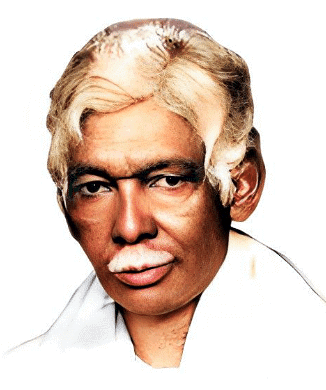 Raghunath Murmu
Raghunath Murmu - Unlike most Indic scripts, Ol Chiki is not an abugida but is a true alphabet, giving equal representation to vowels and consonants.
- The Constitution of India has been translated into the Ol Chiki Script.
Kaithi Script
- Historical Brahmic script widely used in parts of Northern and Eastern India, particularly in present-day Uttar Pradesh, Jharkhand, and Bihar.
- Primarily used for writing legal, administrative, and private records.
- Widely utilized during the Mughal period.
The document Nitin Singhania Summary: Languages in India | History for UPSC CSE is a part of the UPSC Course History for UPSC CSE.
All you need of UPSC at this link: UPSC
|
110 videos|652 docs|168 tests
|
FAQs on Nitin Singhania Summary: Languages in India - History for UPSC CSE
| 1. What are the official languages of India? |  |
Ans. The official languages of India are Hindi and English, as specified in the Eighth Schedule of the Indian Constitution.
| 2. What is the status of Classical Language in India? |  |
Ans. Sanskrit, Tamil, Telugu, Kannada, Malayalam, and Odia have been granted the status of Classical Languages in India.
| 3. What is the National Translation Mission in India? |  |
Ans. The National Translation Mission is an initiative by the Government of India to promote the translation of knowledge texts and other important literature from different Indian languages into English and vice versa.
| 4. What are some of the ancient scripts of India? |  |
Ans. Some of the ancient scripts of India include Brahmi, Devanagari, Tamil, Telugu, Kannada, and Odia scripts.
| 5. How are Indian languages classified? |  |
Ans. Indian languages are classified into four major language families: Indo-Aryan, Dravidian, Austroasiatic, and Tibeto-Burman.
Related Searches
















